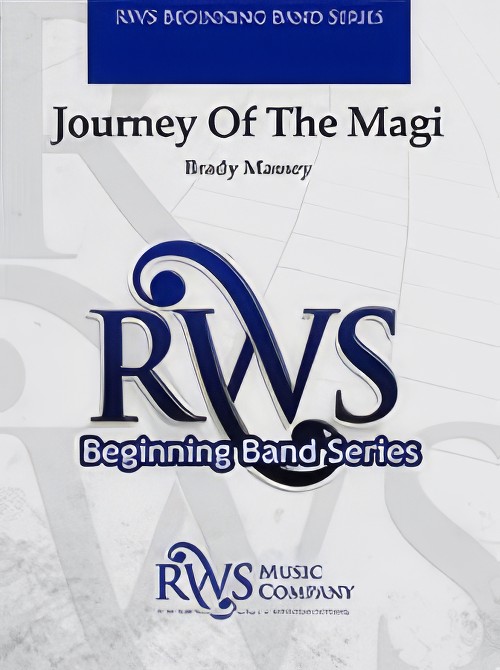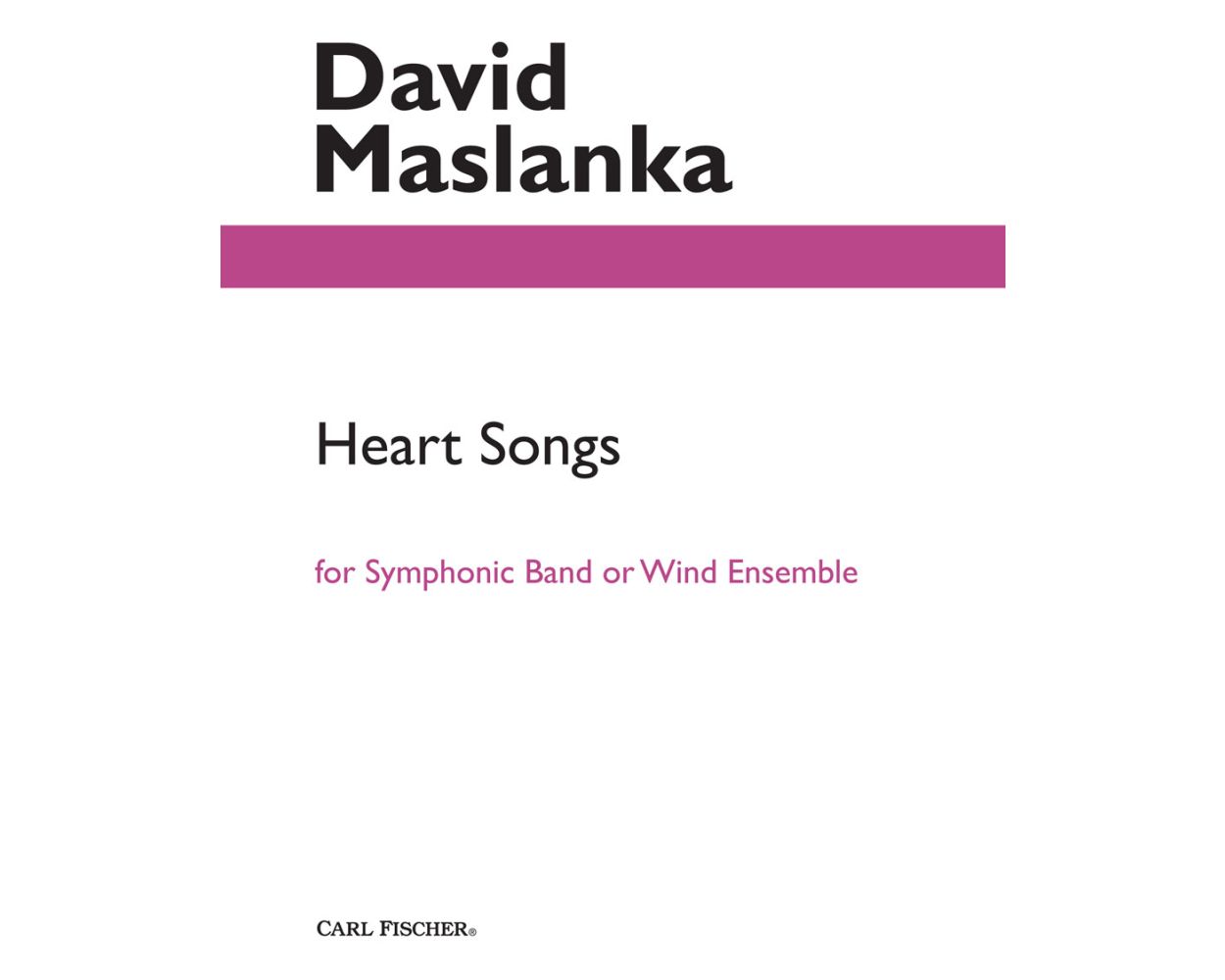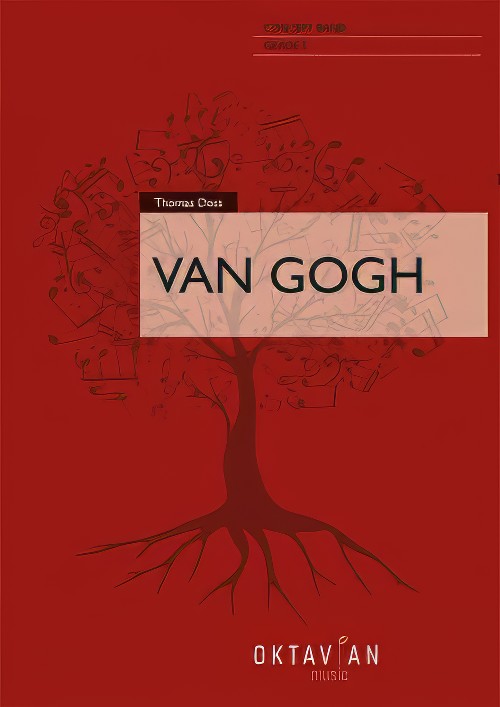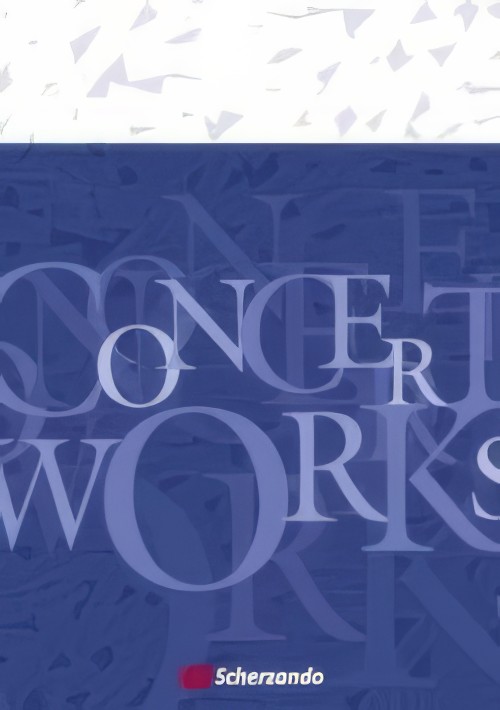Results
-
 £139.99
£139.99Concerto d'Amore - Jacob de Haan
In Concerto d'Amore, a maestoso opening is followed by a quick and energetic movement that leads to a magnificent adagio. A motif from this adagio can be heard in a swinging movement, after which the piece comes to a close with the return of the adagio. This arrangement for concert band certainly brings this beautiful music to life.
Estimated dispatch 7-14 working days
-
 £139.99
£139.99Trois Odelettes - Jacob de Haan
Odelettesis the title of a cycle of poems by the 19th-century French writer, Grard de Neval. In his work, Trois Odelettes, Jacob de Haan set three of de Neval's poems to music for soprano voice and concert band: Une Alle du Luxembourg describes a fleeting moment of love; Espagne is a typically sounding ode to Spain; and Chanson Gothique describes the joy of life itself.
Estimated dispatch 7-14 working days
-
 £55.00
£55.00Journey of the Magi (Concert Band - Score and Parts) - Massey, Brady
Not simply music for the Christmas Season, "Journey Of The Magi" is appropriate all year, as the arrival of the Wise Men occurred a time after Christmas Day. Evoking images of a dignified procession from the East, the music quotes a simple fanfare and a brief appearance of the melody of "We Three Kings". A decidedly unique change of pace from traditional winter concert repertoire, your beginning band will shine as you bring this piece to life. Duration: 1.45
Estimated dispatch 7-14 working days
-
 £76.99
£76.99Lights Out - Alex Shapiro
The renowned composer of Paper Cut and Tight Squeeze has created a love child from these two popular works. The result is Lights Out, an audience-wowing excursion into a new realm of opto-electro-acoustic wind band repertoire that incorporates visual and physical elements into an exhilarating piece. The music itself is stunning, but for the full effect you'll want to devise a performance that plunges the audience into darkness and suddenly surrounds them with glowing colors of LEDs and glowsticks. A very physical approach to connecting band music to life - and to light! To perform the piece, you'll need an audio system capable of playing the prerecorded audio tracks from a laptop computer via a small digital audio interface connected to an audio mixer. Download information is provided in the printed piece.
Estimated dispatch 7-14 working days
-
 £120.00
£120.00Traveler
David Maslanka's Traveler, for Symphonic Wind ensemble, was commissioned in 2003 by the University of Texas at Arlington Band Alumni Association, the Delta Sigma chapter of Kappa Kappa Psi and the Gamma Nu Chapter of Tau Beta Sigma, in honor of the career contributions of Ray C. Lichtenwalter, retiring Director of bands at UT Arlington. Maslanka writes, "Ray has been a close friend and champion of my music for many years, and it was a great pleasure for me to write this piece for his final concert. The idea for Traveler came from the feeling of a big life movement as I contemplated my friend's retirement." Carl Fischer Music is excited to offer this beautifully contemplative piece in a large score format.
Estimated dispatch 12-14 working days
-
 £146.00
£146.00Heart Songs
Heart Songs, another stunning piece by one of the most important writers of music for wind ensemble and band, takes its title from the image of the tree of life being "watered" by the blood of the heart. Like all of Maslanka's music, it is deeply felt and reflective in nature. The three movements of this suite embrace a variety of serious moods; movements two and three use familiar Bach chorales as the basis for unusually rich and original band writing at the highest musical level. Duration: 16'
Estimated dispatch 12-14 working days
-
 £75.50
£75.50The Dream of Tiberius - David Campo
The Roman Emperor Tiberius was born in 42 BCE to Tiberius Claudius Nero and Livia Drusilla, both descendants of prestigious political families, at a time when Rome was undergoing significant political upheaval. Julius Caesar had begun a brutal civil war in 49 BCE to end Rome's rule as a Republic and consolidate his power as supreme ruler. Following Caeser's assassination in 44 BCE, Tiberius' father backed the forces wishing to return Rome to a Republic, but they were defeated by Caesarian loyalists led by Caeser's heir Octavian. As a result, Tiberius' early life was spent on the run and in political exile with his parents. In 27 BCE, Octavian would become the first Emporer of Rome and assume the name Augustus. Augustus forced Tiberius' parents to divorce and took Tiberius' mother as his new bride, separating the family and forcing Tiberius to live with his father. Upon his father's death, Tiberius went to live with his mother and Emporer Augustus, a situation Tiberius found extremely uncomfortable but one over which he had no control. Having been adopted by the Emperor, Tiberius assumed the military and political life thrust upon him. He proved to be an outstanding military and political leader, and with his marriage to Vipsania Agrippina his life took on a heretofore unknown stability. However, Augustus would intervene in Tiberius' life once more, forcing him to abandon his happy marriage and take Augustus' daughter Julia (Tiberius' step sister) as his new wife. This arrangement, while securing Tiberius' place as Augustus' heir and ensuring he would one day be Emperor of Rome, was disastrous. Julia's drunken licentiousness was a constant source of scandal and embarrassment for Tiberius (and her father, the Emperor) and she was eventually exiled by her father Augustus. Tiberius was named Emperor of Rome upon the death of Augustus in AD 14, assuming his position as the most powerful man on Earth. However, no matter how powerful he had become, Tiberius never felt as if he had ever had any control over his life, having been manipulated from childhood through adulthood by the whims of Augustus. As Emperor, he soon became disgusted with the political intrigue of the Roman Senate and by AD 26 left Rome and took up residence on the island of Capri, where he lived out the rest of his life. History does not regard Tiberius fondly and by all accounts towards the end of his reclusive life on Capri, he had become a miserable, sick and mentally unstable old man reveling in debauchery and cruelty. It is also informative to note that he was Emperor of Rome when Jesus of Nazareth was crucified, and while there is no indication that Tiberius was even aware of the existence of Jesus, as Emperor he was responsible for the appointment of Pontius Pilate as Governor of Judea. Even considering this, it is difficult to look on the life of the Emperor Tiberius and not feel some sympathy and pity. It's in this spirit that I composed "The Dream of Tiberius." I imagine the man sitting in thoughtful seclusion on the beautiful island of Capri imagining what his life might have happily been had not power been thrust upon him: husband, father and humble servant of the people.
Estimated dispatch 7-14 working days
-
 £279.99
£279.99Van Gogh (Concert Band - Score and Parts) - Doss, Thomas
This composition is not a work inspired by the life of the famous painter, but rather an attempt at a pictorial immersion into his world. In addition to Van Gogh's character and tragic life, the technique he employed to create his works, the bright colours of his paintings and his view of nature served as inspiration for this musical work. Point by point, stroke by stroke, Van Gogh brought his own world to life on canvas.On the life of Van Gogh: The Dutch artist Vincent van Gogh was one of the most important pioneers of Modernism, despite being relatively unknown during his own lifetime. As an artist, he chose a life of poverty and seclusion. From today's perspective, his important woks were created from 1880 onwards, when he had already more or less succumbed to madness. While his earlier works could still be classed as contemporary, he matured into a pioneer of Expressionism with his later work indicating an increasing self-awareness. He was just 37 years old when he died but he created over 750 paintings and 1600 drawings in the last ten years of his life.The structure of the work:Start: Brushes and Paints: Van Gogh retired to Arles in southern France where he found his artistic home. The colours and flowering gardens of this landscape awakened in him an unbelievably great creative power.A: A Picture Comes into Being: Van Gogh's psychotic episodes and bouts of depression did not stop him from painting wonderful pictures. Hardly anyone recognised his genius during his lifetime, on the contrary, he often felt misunderstood.C: Paris - Arles: In Paris (from 1886), Van Gogh became inspired by the French art scene. His works found few takers, however. He met and befriended the painter Paul Gauguin, but the lack of success made Van Gogh short tempered, and he began to drink. Eventually, he moved from Paris to Arles in the south of France to establish an artists' collective with Gaugin. Within a few weeks, the two got into such a violent argument that Van Gogh attacked his friend with a knife. The friends parted ways and afterwards Van Gogh cut off his right ear. In 1889 he voluntarily admitted himself into a mental hospital at St. Remy, suffering from hallucinations and fearing that he would lose his mind.G: The Starry Night One of his most famous paintings, created in 1898.H: Death and Brotherly Love Vincent van Gogh accepted an invitation to Auver-sur-Oise in 1890. This was one of his most intensive creative periods. He also went there for treatment, but his mental state hardly improved. After an extended walk, he injured himself fatally with a pistol under mysterious circumstances. Not even to his beloved brother Theo, who had supported him all his life, did he reveal on his deathbed how the accident had occurred.J: Art Market Today, Van Gogh's paintings are among the most expensive paintings on the art market. How ironic, given that he could hardly sell a painting during his lifetime. "I put my heart and soul into my work and lost my mind in the process." (Vincent van Gogh)Duration: 13.15
Estimated dispatch 7-14 working days
-
 £209.99
£209.99Codon (Concert Band - Score and Parts) - Houben, Kevin
Codon is a term used in the field of molecular genetics to describe the interaction between the three elements that are important for both the creation and the preservation of life. Kevin Houben uses this term as a metaphor for the interaction between the conductor, the musicians and the committee of a concert band. They all have the same goal, to preserve the life of the band. This work consists of three movements, symbolising birth, life and death - either of a human being or a band. From the foundation of a band over good and bad times up to the optimistic future, this work will appeal to the soul of every band member in the world!Duration: 17:00
Estimated dispatch 7-14 working days
-
 £137.00
£137.00Tempest Of The Ocean - Rossano Galante
The cycle of oceanic life is vividly depicted in this stunning programmatic work for band by Rossano Galante. Through the sands of time, the ocean's behemoth size holds a multitude of lifeforms. These inhabitants are a compilation of beautiful sea life, moving gracefully through the waters. On the darker side, there are menacing eating machines that also terrorize these smaller sea creatures - the cycle of life in this oceanic environment. "Tempest of the Ocean" brilliantly captures all these elements. An outstanding work for mature bands by one of America's most exciting composers! Magnificent!
Estimated dispatch 7-14 working days
